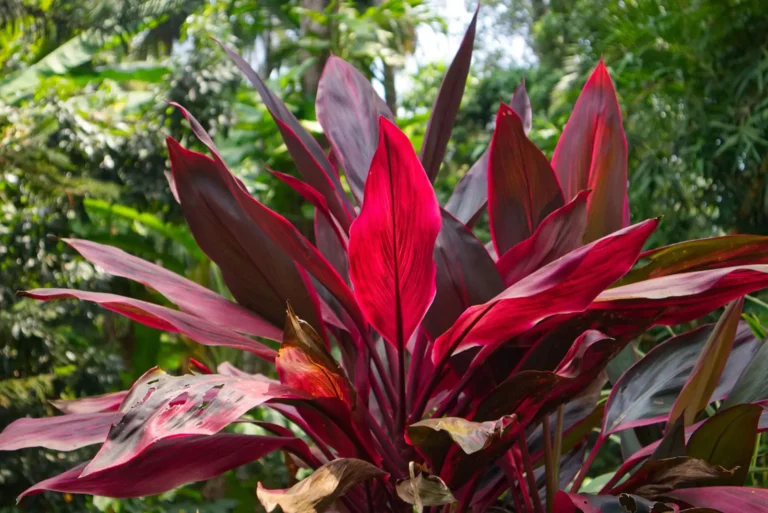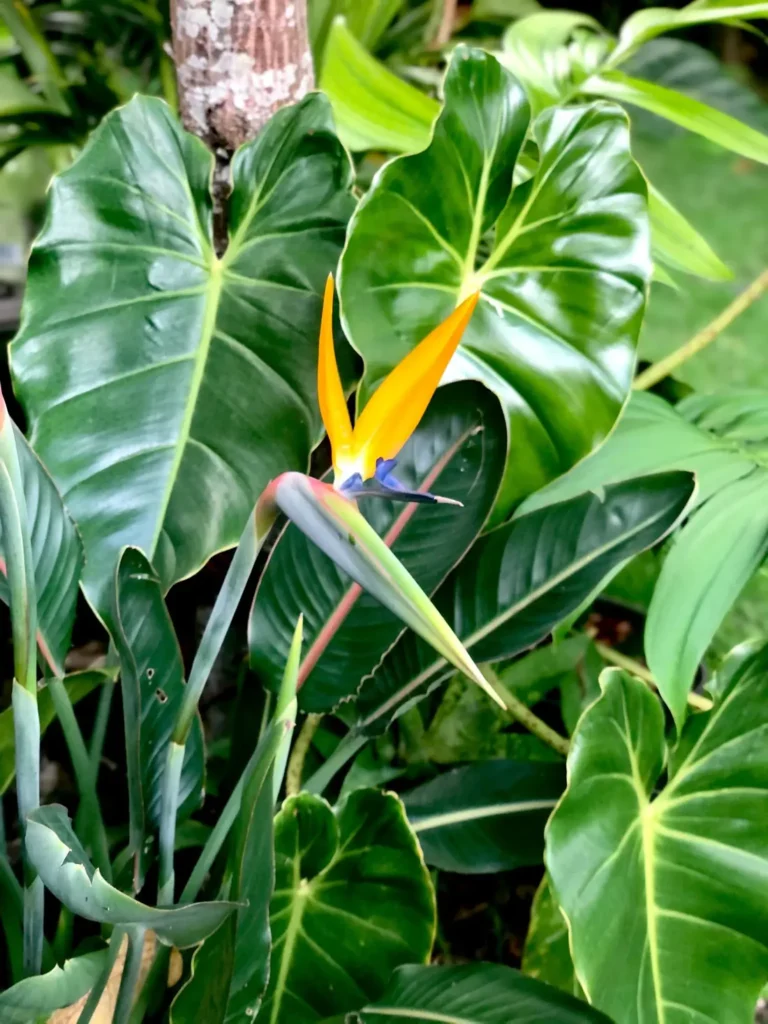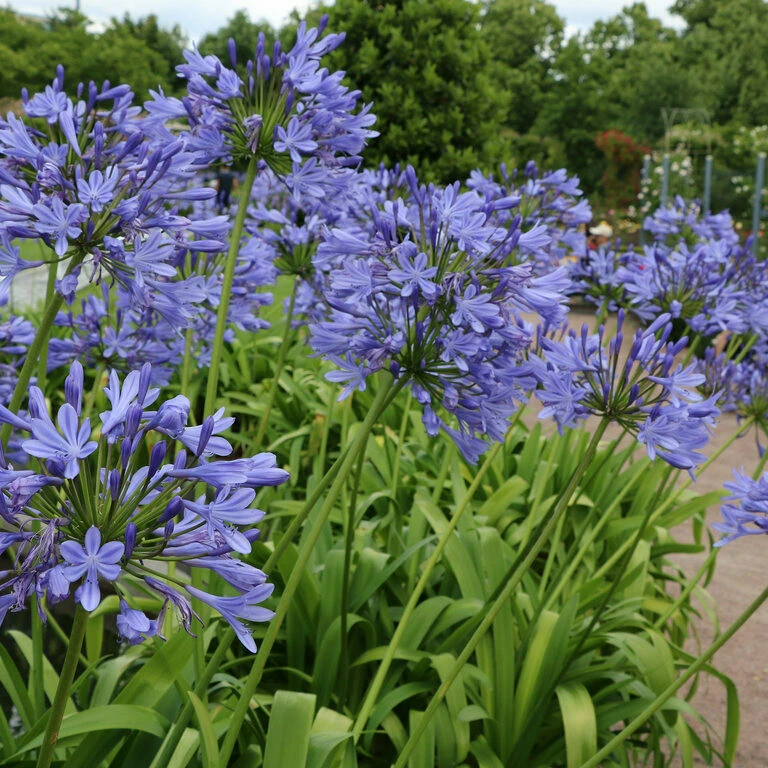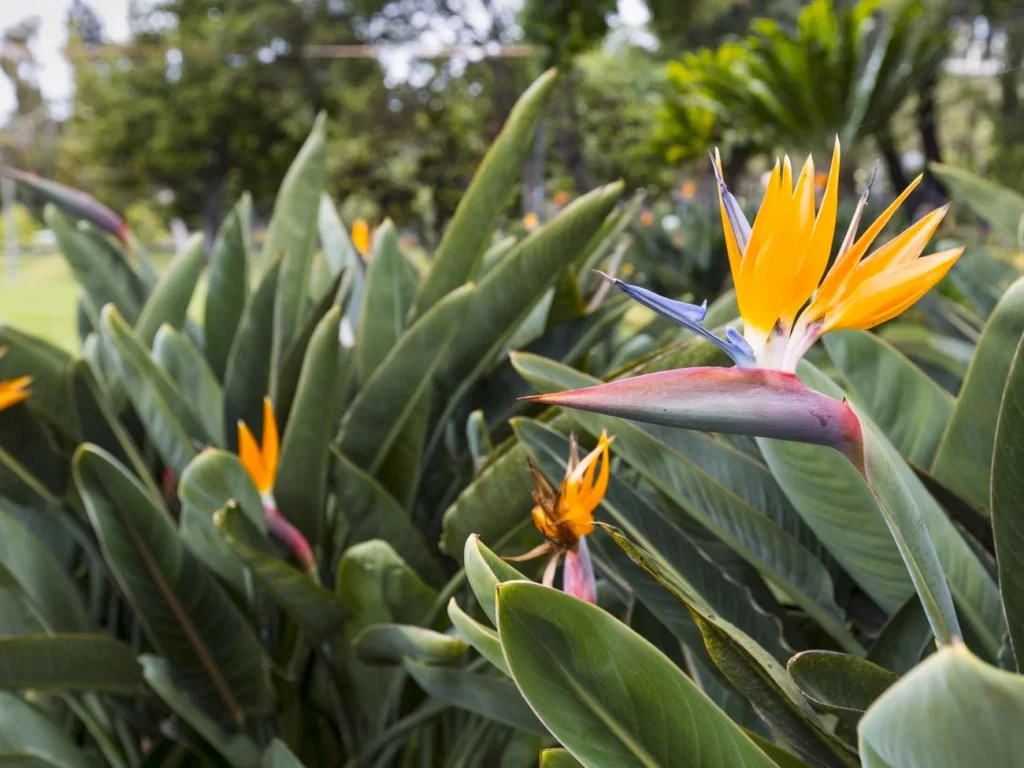Blog
Top 7 Companion Plants for Bird of Paradise: Enhance Your Tropical Garden
Ever feel like your Bird of Paradise looks a bit lonely sitting in a corner or by itself in a pot? Like it’s missing a few plant friends to really bring the vibe together? You’re definitely not alone. Tons of plant lovers—especially those who are into tropical gardening—wonder what plants pair well with this bold beauty.
Good news: I’ve got your back. In this post, I’m going to introduce you to seven of the best companion plants for Bird of Paradise. These aren’t just random picks—they’re plants that thrive in similar conditions, complement each other visually, and create that lush, inviting garden space we all dream about.
That’s where companion planting comes in. By choosing the right companion plants for Bird of Paradise, you’ll not only highlight its beauty but also support a healthier, more vibrant garden environment. This guide will help you decide exactly what to plant with Birds of Paradise—and what to avoid.
You may like: How to Grow Bird of Paradise: Expert Tips for Lush, Blooming Plants
Why Companion Plants Matter
Planting companions around your Bird of Paradise isn’t just about looks (although we love a good color combo!). Smart companion planting can:
-
Boost soil health and moisture retention
-
Attract pollinators like bees, butterflies, and hummingbirds
-
Prevent weed growth
-
Create layered beauty and balance
-
Enhance the tropical vibe year-round
Top 7 Bird of Paradise Companion Plants
Let’s dive into the top 7 companion plants that pair beautifully—both visually and functionally—with Bird of Paradise.
1. Cordyline (Ti Plant)

Growing Conditions: Full sun to part shade; well-drained soil
Size: 3–10 feet tall
USDA Zones: 9–11
Foliage Colors: Pink, red, green, purple
Cordyline is like the fashion-forward friend your Bird of Paradise didn’t know it needed. With its dramatic, colorful leaves, this plant adds height, movement, and bold color contrast.
Why it works: Both plants love sunlight and good drainage. Cordyline’s vibrant hues make the orange and blue tones of Bird of Paradise pop.
Tip: Choose ‘Red Sister’ or ‘Hawaiian Boy’ for extra pizzazz.
2. Canna Lily
Growing Conditions: Full sun; moist, fertile soil
Size: 3–6 feet tall
USDA Zones: 7–11
Flower Colors: Red, orange, yellow, pink
Cannas are the ultimate statement flowers. Their tall stalks and massive blooms echo the tropical drama of Bird of Paradise and provide waves of color throughout the warm season.
Why it works: Cannas and Birds of Paradise both thrive in heat and sunlight, making them natural allies in a tropical landscape.
Pro tip: Plant Cannas in groups for a lush, layered look.
3. Elephant Ear (Colocasia)

Growing Conditions: Part shade to full sun; rich, moist soil
Size: 2–6 feet tall
USDA Zones: 8–11
Leaf Colors: Deep green, black-purple
If you’re going for a lush, jungle vibe, Elephant Ears are a must. Their gigantic, heart-shaped leaves offer a bold, contrasting backdrop that really lets Bird of Paradise shine.
Why it works: Elephant Ears create a rich, textural contrast and add a sense of depth and shade—perfect for balancing out the upright structure of Bird of Paradise.
Design idea: Use them as a border or background plant behind shorter flowering companions.
Read more: How to Grow Alocasia Calidora: Your Ultimate Guide to Elephant Ear Care
4. Lantana
Growing Conditions: Full sun; sandy or loamy soil
Size: 1–3 feet tall
USDA Zones: 8–11
Bloom Colors: Yellow, pink, orange, red, multicolor
Lantana is a butterfly magnet and a champion bloomer. Its clusters of tiny, colorful flowers bloom nonstop, giving your garden constant visual interest.
Why it works: Lantana fills in lower space around the base of your Bird of Paradise, keeping weeds down and color levels high.
Pollinator bonus: Bees, hummingbirds, and butterflies love it!
5. Croton
Growing Conditions: Full sun to part shade; well-drained soil
Size: 3–6 feet tall
USDA Zones: 10–11
Foliage Colors: Yellow, orange, green, red
Crotons are the divas of the foliage world—with good reason. Their rainbow-colored leaves bring instant vibrancy and pair beautifully with Bird of Paradise in containers or borders.
Why it works: Croton’s bold tones mirror and complement the colorful bracts and flowers of Bird of Paradise. Plus, they like the same heat and sunlight.
Care tip: Crotons need warmth—bring them indoors if your winters dip below freezing.
6. Agapanthus (Lily of the Nile)

Growing Conditions: Full sun; well-drained soil
Size: 2–4 feet tall
USDA Zones: 8–11
Flower Colors: Blue, violet, white
Agapanthus brings elegance with its rounded clusters of bell-shaped flowers that sway gently in the breeze. Their vertical form plays well with Bird of Paradise, offering visual balance and softness.
Why it works: These perennials bloom in summer and love full sun—just like their tropical counterpart.
Design tip: Line pathways or garden edges with Agapanthus for a dreamy, coastal-inspired look.
7. Salvia (Salvia guaranitica)
Growing Conditions: Full sun to partial shade; average, well-drained soil
Size: 3–5 feet tall
USDA Zones: 7–10
Flower Colors: Blue, purple
Salvia is a low-maintenance flowering plant that adds vertical color and fragrance to your garden. It also attracts pollinators like crazy!
Why it works: Its upright flower spikes echo the form of Bird of Paradise while offering seasonal variety and rich color.
Bonus: Salvia is deer-resistant and drought-tolerant—perfect for lower-maintenance gardens.
Read more: 5 Perennials to Plant in May for Summer Splendor
What Not to Plant with Bird of Paradise
While many plants get along with Bird of Paradise, some just aren’t compatible. Avoid plants that:
-
Need frequent watering
-
Prefer full shade
-
Struggle in heat or drought
Bad matches include:
Final Thoughts
Your Bird of Paradise is more than just a solo star—it thrives when surrounded by the right supporting cast. With these companion plants, you can create:
-
A visually striking garden layout
-
A more sustainable and resilient environment
-
A habitat for pollinators and beneficial insects
Whether you’re working with a sprawling backyard or a balcony jungle, companion planting gives you the creative tools to turn your space into a tropical paradise—no passport required.
Companion Care 101: Keep Everyone Happy
Want a garden that thrives together? Follow these basic care tips:
-
Group plants with similar needs.
-
Don’t overwater. Drainage is critical, especially in shared containers.
-
Feed during the growing season (spring/summer) with a tropical plant fertilizer.
-
Check for pests like spider mites or mealybugs—especially indoors.
Frequently Asked Questions
What are the best companion plants for Bird of Paradise?
Look for sun-loving, drought-tolerant plants like Cannas, Crotons, Lantana, and Elephant Ear.
Can I plant Bird of Paradise with succulents?
Some succulents may be too dry-loving, but drought-tolerant varieties like Agave or Yucca can work well in shared conditions.
Do companion plants affect Bird of Paradise blooming?
Yes—healthy soil, reduced stress, and increased pollination from companions can support better blooming over time.


7 Vegetables to Plant in December for a Bountiful Winter Harvest
Winter gardening is a challenge many new gardeners shy away from. But if you’re among [...]
Dec
9 Common Christmas Cactus Problems and How to Fix Them
Have you ever walked past your Christmas cactus and wondered why it suddenly looks sad? [...]
Nov
Swedish Ivy Care: How to Grow a Healthy, Thriving Plant
Have you ever looked at your Swedish Ivy and wondered why the leaves are turning [...]
Nov
Avoid These 10 Garlic Planting Mistakes for Bigger, Healthier Bulbs
Growing garlic at home is one of the most satisfying things a gardener can do [...]
Nov
How to Prevent Christmas Cactus Bud Drop: Tips for a Healthy Bloom
Have you ever noticed your beautiful Christmas cactus (Schlumbergera) starting to lose its buds just [...]
Nov
Discover 7 Stunning Types of Night-Blooming Cereus
Have you ever waited for a flower that only opens at night and then disappears [...]
Nov